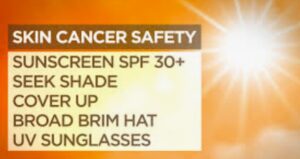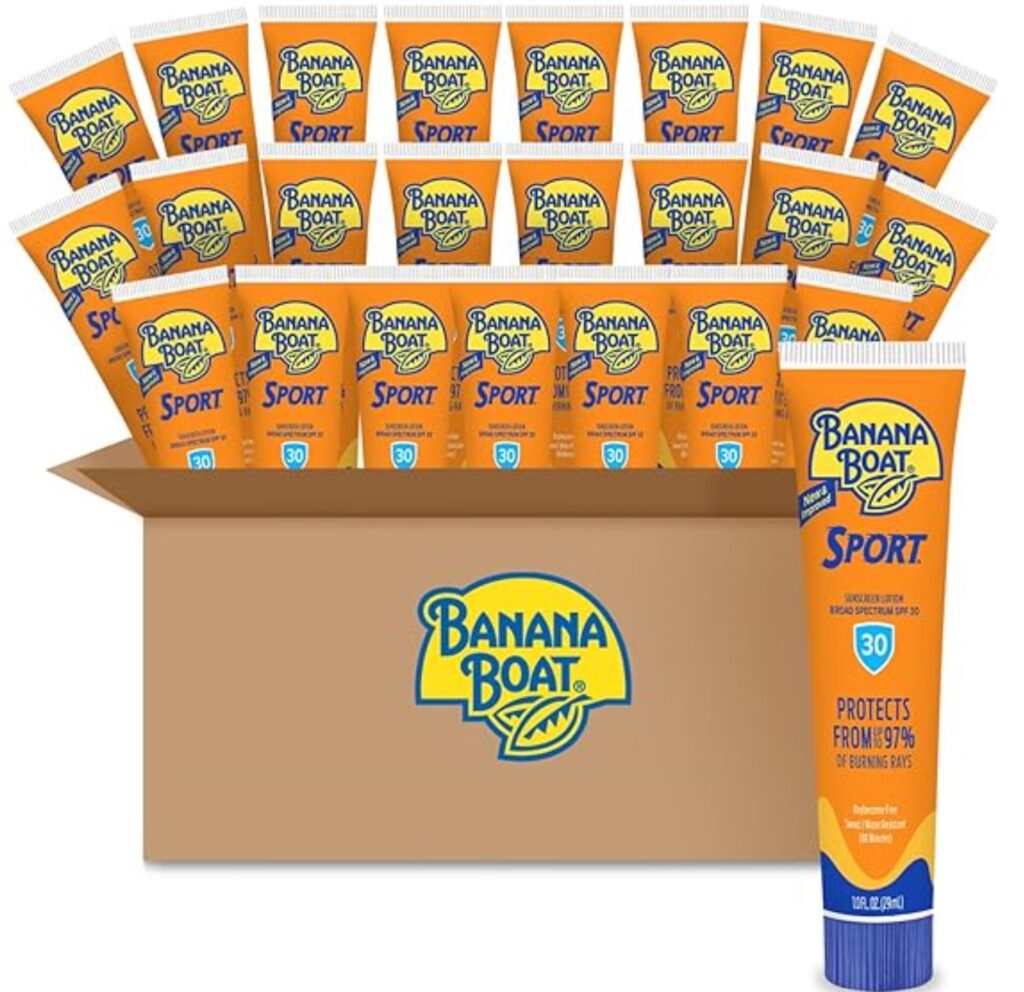
Now that it’s “Summertime and the Living is Easy” you are likely spending more time outside which is a great way to be physically active and reduce stress or taking day trips to the beach and enjoying the warming summer breezes and refreshing waters. However, it is also a time to be mindful of too much of a good thing or too much exposure to ultraviolet (UV) light. The bottom-line is that most skin cancers are caused by too much exposure to ultraviolet (UV) light which the UV-rays are an invisible kind of radiation that comes from the sun, tanning beds, and sunlamps. UV rays can damage skin cells. In turn, people who are exposed to high levels of UV rays are at greater risk for skin cancer.
Skin cancer is the most commonly diagnosed cancer in the nation. According to one estimate, about 5.4 million cases of skin cancer are diagnosed each year. While roughly 8 out of 10 new skin cancer cases are basal cell cancers, American Cancer Society (ACS) estimates that about 100,640 new cases of melanoma skin cancer will be diagnosed in 2024.
Just the Facts:
1 in 5 Americans will develop skin cancer by the age of 70.
More than 2 people die of skin cancer in the U.S. every hour.
Having 5 or more sunburns doubles your risk for melanoma.
When detected early, the 5-year survival rate for melanoma is 99 percent.
Important to Note: Anyone can get skin cancer. While those with light skin are more likely to get skin cancer, darker-skinned people can also be affected. “Everyone’s skin can be impacted by the sun and other forms of UV rays – regardless of their skin color,” ACS. Having darker skin lowers the risk of melanoma at the more common sites, like the legs, back and chest, but anyone can develop it on areas like the palms of the hands, soles of the feet and under the nails. In fact, melanomas found in these areas account for more than half of all melanomas in African American people but fewer than 1 in 10 melanomas in White people.
Protection from UV rays is also important all year, not just during the summer. UV rays can reach you on cloudy and cool days, and they reflect off of surfaces like water, cement, sand, and snow. In the continental United States, UV rays tend to be strongest from 10 a.m. to 4 p.m. daylight saving time (9 a.m. to 3 p.m. standard time).
Prevention is Key!
You can reduce your risk of skin cancer by limiting or avoiding exposure to ultraviolet (UV) radiation. Checking your skin for suspicious changes can help detect skin cancer at its earliest stages. Early detection of skin cancer gives you the greatest chance for successful skin cancer treatment.
A starting point to reduce exposure to ultraviolet (UV) light is to plan your activities for morning, late afternoon and evening.
Below are more detailed ideas to protect your skin from the sun from the CDC.

How to protect your skin from the sun (CDC Sun Safety Facts) https://www.cdc.gov/skin-cancer/sunsafety/index.html#:~:text=You%20can%20reduce%20your%20risk,you’re%20in%20the%20shade
Shade: You can reduce your risk of sun damage and skin cancer by staying in the shade under an umbrella, tree, or other shelter. Your best bet to protect your skin is to use sunscreen or wear protective clothing when you’re outside—even when you’re in the shade.
Clothing: When possible, wear long-sleeved shirts and long pants and skirts, which can provide protection from UV rays. If wearing this type of clothing isn’t practical, try to wear a T-shirt or a beach cover-up. Clothes made from tightly woven fabric offer the best protection. A wet T-shirt offers much less UV protection than a dry one, and darker colors may offer more protection than lighter colors. Some clothing is certified under international standards as offering UV protection.
Hat: For the most protection, wear a hat that has a brim all the way around that shades your face, your ears, and the back of your neck. A tightly woven fabric, such as canvas, works best to protect your skin from UV rays. Avoid straw hats with holes that let sunlight through. A darker hat may offer more UV protection. If you wear a baseball cap, you should also protect your ears and the back of your neck by wearing clothing that covers those areas, using sunscreen, or staying in the shade.
Sunglasses: Sunglasses protect your eyes from UV rays and reduce the risk of cataracts. They also protect the tender skin around your eyes from sun exposure. Sunglasses that block both UVA and UVB rays offer the best protection. Most sunglasses sold in the United States, regardless of cost, meet this standard. Wrap-around sunglasses work best because they block UV rays from sneaking in from the side.
Sunscreen: Put on broad spectrum sunscreen that filters out both UVA and UVB rays and has an SPF of 15 or higher before you go outside. Don’t forget to put a thick layer on all exposed skin. Get help for hard-to-reach places like your back. And remember, sunscreen works best when combined with other options. Sunscreen is not recommended for babies who are 6 months old or younger. The US Food and Drug Administration recommends keeping infants out of the sun during midday and using protective clothing if they have to be in the sun. SPF. Sunscreens are assigned a sun protection factor (SPF), which is a number that rates how well they filter out UV rays. Higher numbers indicate more protection. You should use a broad spectrum sunscreen with SPF of 15 or higher.
Reapplication. Sunscreen wears off. Put it on again if you stay out in the sun for more than 2 hours and after swimming, sweating, or toweling off.
Expiration date. Check the sunscreen’s expiration date. Sunscreen without an expiration date has a shelf life of no more than 3 years. Its shelf life is shorter if it has been exposed to high temperatures.
At our August program we will be providing a travel size sample of Banana Boat Sport Ultra SPF 30 Sunscreen Lotion and a mini sunscreen lip balm with SPF 30 with different flavors to help support your prevention steps towards reducing your risk of skin cancer.


More Information about skin cancer see below:
-
Skin Cancer Facts & Statistics What You Need to Know https://www.skincancer.org/skin-cancer-information/skin-cancer-facts/
-
CDC Skin Cancer: Sun Safety Facts https://www.cdc.gov/skin-cancer/sun-safety/index.html#:~:text=You%20can%20reduce%20your%20risk,you’re%20in%20the%20shade.
-
Fact vs. Fiction: Debunking Common Misconceptions about Skin Cancer, Sun Safety https://pressroom.cancer.org/releases?item=1321
-
What’s Your Sun Safety IQ? https://www.cancer.org/cancer/risk-prevention/sun-and-uv/sun-safety.html
-
Mayo Clinic Skin Cancer https://www.mayoclinic.org/diseases-conditions/skin-cancer/symptoms-causes/syc-20377605
